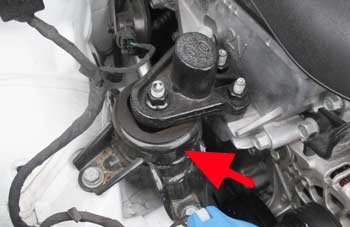When it comes to enhancing vehicle performance and cabin comfort, few components play as quiet yet crucial a role as engine mounts. Although often overlooked, these parts are essential for maintaining engine stability, aligning drivetrain components, and significantly minimizing vibrations and noise. Whether you’re operating a compact car, a marine vessel, or industrial machinery, the right engine mounts can make a dramatic difference in both performance and user experience.
In modern vehicle engineering, special attention is paid to reducing noise, vibration, and harshness (NVH). A quality engine mount serves as a barrier between the engine and the vehicle frame, dampening vibrations generated by the engine’s internal combustion and preventing that energy from transferring into the cabin or operating area.
Understanding the Basics: What Are Engine Mounts?
Engine mounts are mechanical components that secure the engine to the vehicle’s chassis. They typically consist of a combination of metal and rubber or other vibration-dampening material. Some advanced mounts also incorporate hydraulic fluid or electronic control systems to better absorb and respond to vibration changes.
The primary functions of engine mounts are:
- Positioning the engine securely within the frame.
- Dampening vibrations to protect the vehicle structure and improve ride quality.
- Absorbing engine torque, especially during acceleration and deceleration.
Without effective engine mounts, the engine would transmit constant vibrations and noise throughout the entire vehicle, creating discomfort for occupants and causing potential long-term damage to various components.
How Engine Mounts Reduce Vibration
Every engine generates a certain level of vibration due to the movement of pistons, valves, and the rotation of the crankshaft. These vibrations are especially strong during acceleration, gear shifts, or when driving over uneven surfaces. If left unchecked, these forces can rattle the vehicle and lead to a range of issues such as:
- Driver and passenger discomfort
- Increased wear on other components
- Alignment problems in the drivetrain
Rubber engine mounts act as cushions, isolating the engine’s vibrations from the vehicle frame. This prevents the vibrations from radiating through the cabin. Hydraulic mounts go a step further by using a fluid-filled chamber to absorb a broader range of frequencies, particularly those that traditional rubber mounts can’t handle effectively.
High-performance or active engine mounts can even adjust their damping characteristics in real-time. These mounts use electronic sensors and actuators to respond dynamically to engine load and road conditions, delivering optimal vibration reduction.
Reducing Noise Transmission
Noise from the engine comes not only from combustion but also from the friction of moving parts and the vibration of connected systems like the exhaust or intake manifold. Engine mounts reduce this noise by absorbing and dampening the vibrations before they can echo through the chassis or body panels.
The use of specialized materials like high-density rubber, polyurethane, or even composites allows mounts to effectively break the path of noise transmission. In luxury or electric vehicles, where quiet operation is a major selling point, advanced mounts are engineered specifically to eliminate even the smallest vibration-induced sounds.
By isolating the engine from the chassis, engine mounts:
- Prevent metallic parts from resonating
- Minimize low-frequency noise inside the cabin
- Contribute to an overall quieter, more comfortable ride
Signs of Failing Engine Mounts
Over time, engine mounts degrade due to heat, oil exposure, and general wear and tear. As they lose their elasticity or hydraulic fluid, their ability to absorb vibration diminishes. Common signs of failing mounts include:
- Unusual engine movement or rocking
- Excessive cabin vibrations, especially during idling
- Clunking or banging noises during acceleration or braking
- Misalignment of engine-related parts
These symptoms can lead to reduced driving comfort and potential mechanical failures. Replacing worn-out engine mounts promptly helps preserve both the performance and longevity of the engine and the vehicle itself.
Choosing the Right Engine Mount for Vibration Control
Selecting the right engine mount depends on several factors, including:
- Engine size and configuration
- Driving or operating conditions
- Vehicle type and intended use
- Level of vibration and noise sensitivity
For instance, a standard rubber mount might be suitable for everyday commuting, while a hydraulic or active mount could be better for high-end vehicles or precision industrial equipment.
Always ensure that replacement mounts meet OEM specifications and quality standards. Inferior or mismatched mounts can compromise vibration control and lead to premature wear.
Conclusion
Engine mounts are not just structural components; they are vital to the comfort, quietness, and performance of your vehicle or equipment. By reducing vibration and noise, they protect key components from damage, enhance ride quality, and contribute to a safer and more enjoyable driving experience.
Whether you’re maintaining a vehicle, upgrading parts for performance, or outfitting specialized machinery, choosing high-quality engine mounts tailored to your needs is a smart investment in reliability and comfort.

